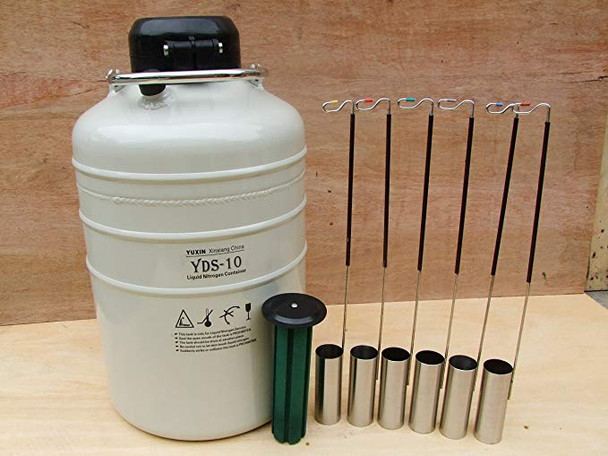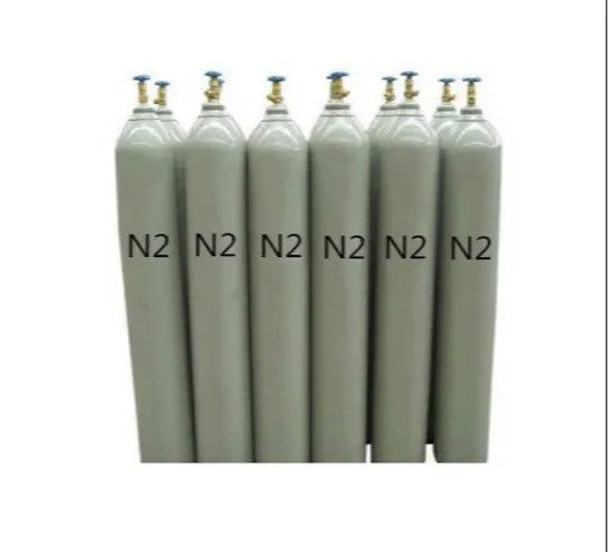Understanding Nitrogen Tanks: Uses, Safety, and Maintenance
Key Takeaway
- Versatility of Nitrogen Tanks: Nitrogen tanks play a critical role across industries, including medical, food and beverage, manufacturing, and oil and gas, by safely storing and transporting liquid or gaseous nitrogen.
- Safety First: Handling nitrogen tanks requires strict adherence to safety protocols to avoid risks such as asphyxiation, cryogenic burns, and over-pressurization. Proper storage, protective gear, and regular inspections are essential.
- Regular Maintenance is Crucial: Routine inspections, cleaning, and testing ensure the efficiency and longevity of nitrogen tanks, while preventing costly repairs or operational disruptions.
Introduction
Nitrogen tanks are indispensable tools across various industries, offering safe storage and transportation of nitrogen in liquid or gaseous forms. These tanks support critical applications, from food preservation and cryopreservation in the medical field to creating inert environments for manufacturing and welding processes. However, handling nitrogen tanks requires strict adherence to safety measures to mitigate risks like asphyxiation, cryogenic burns, and pressure-related hazards.
Regular maintenance, such as inspections and hydrostatic testing, is crucial for ensuring efficiency and compliance with industry standards. By understanding their uses, safety protocols, and maintenance needs, businesses can optimize the benefits of nitrogen tanks while maintaining a secure and efficient workspace.
This guide delves into the uses, safety measures, and maintenance tips for nitrogen tanks, offering insights to help businesses optimize their operations while ensuring safety.
10L Cryogenic container Liquid Nitrogen
What Are Nitrogen Tanks?
Nitrogen tanks are purpose-built containers for holding nitrogen in its liquid or gaseous state. Their primary function is to safely store and transport nitrogen for industrial, medical, and scientific applications.
Types of Nitrogen Tanks
1. Cryogenic Tanks
Used for storing liquid nitrogen at extremely low temperatures (-196°C). These are commonly seen in laboratories and industries requiring nitrogen in liquid form.
2. Compressed Gas Cylinders
Store nitrogen in its gaseous state under high pressure. These cylinders are widely used in welding, manufacturing, and medical applications.
Materials and Construction
Nitrogen tanks are typically made of stainless steel or aluminum to ensure durability and resistance to extreme temperatures or high pressure. Their design also incorporates insulation to maintain nitrogen's state, especially in cryogenic tanks.
Uses of Nitrogen Tanks in Various Industries
Nitrogen tanks have become indispensable tools across numerous sectors. Below are some of the key applications:
1. Medical Field
Liquid nitrogen is used for cryopreservation to store biological samples like blood, sperm, and eggs. It also plays a role in equipment sterilization, ensuring a bacteria-free environment for surgeries and medical procedures.
2. Food and Beverage Industry
Nitrogen helps extend the shelf life of packaged foods by displacing oxygen, which slows down spoilage. In brewing, nitrogen tanks facilitate nitrogenation for creating smooth, creamy beer textures.
3. Manufacturing
Nitrogen tanks create an inert atmosphere during welding and metal fabrication, preventing oxidation and ensuring the quality of the final product. Electronics manufacturers use nitrogen to safeguard delicate components from corrosion.
4. Oil and Gas
Nitrogen tanks support enhanced oil recovery by injecting nitrogen into reservoirs. They are also used for pipeline purging and cleaning, ensuring safe transport of oil and gas.
5. Other Applications:
Researchers and scientists rely on nitrogen for experimental purposes, while aerospace industries use it for pressurizing rocket fuel tanks.
Nitrogen Gas High purity compressed
Safety Considerations When Handling Nitrogen Tanks
While nitrogen is invaluable, improper handling of its storage tanks can pose risks. Adhering to safety protocols is crucial to prevent accidents.
Hazards of Nitrogen
1. Asphyxiation: Nitrogen displaces oxygen, making confined spaces hazardous if leaks occur.
2. Cryogenic Burns: Direct contact with liquid nitrogen can cause frostbite or severe tissue damage.
Storage Guidelines
1. Ensure tanks are stored in well-ventilated areas to avoid oxygen displacement.
2. Place tanks upright and secure them to prevent tipping over.
3. Maintain a safe distance from heat sources to avoid pressurization hazards.
Usage Precautions
1. Always wear appropriate personal protective equipment (PPE), such as insulated gloves, safety goggles, and face shields.
2. Avoid overfilling tanks or exceeding their pressure limits.
3. Use compatible regulators and valves to control the release of nitrogen safely.
Nitrogen Gas Regulator
Maintenance Tips for Nitrogen Tanks
Proper maintenance of nitrogen tanks ensures their longevity, safety, and efficiency. Regular checks and servicing are essential to avoid operational disruptions.
Inspection Protocols
1. Conduct routine visual inspections to check for physical damages like dents, rust, or cracks.
2. Ensure pressure gauges and safety valves are functioning correctly to prevent over-pressurization.
3. Inspect insulation layers in cryogenic tanks to maintain proper temperature regulation.
Cleaning and Servicing
1. Regularly clean the interior and exterior of the tanks to prevent contamination.
2. Use non-corrosive cleaning agents compatible with the tank material.
3. Ensure no moisture is left inside the tank after cleaning, as it can cause freezing or corrosion.
Periodic Testing
1. Perform hydrostatic tests periodically to evaluate the structural integrity of the tanks.
2. Check the performance of valves, seals, and fittings under operational conditions.
3. Keep a record of test results to ensure compliance with safety standards.
Long-Term Storage Guidelines
1. If storing tanks for extended periods, empty them or maintain a low-pressure state.
2. Store in a dry, cool environment to prevent material degradation.
3. Label tanks appropriately to indicate their contents and usage status.
Industry Standards and Regulatory Compliance
Nitrogen tanks are classified as high-risk equipment, and their use is governed by strict industry standards and regulations.
Key Regulatory Bodies
1. OSHA (Occupational Safety and Health Administration): Provides safety guidelines for handling and storing nitrogen tanks.
2. DOT (Department of Transportation): Regulates the transport of nitrogen tanks to ensure public and environmental safety.
3. ASME (American Society of Mechanical Engineers): Sets design and testing standards for pressure vessels.
Compliance Requirements
1. Ensure tanks are certified and meet industry-specific standards.
2. Conduct regular safety training for staff handling nitrogen tanks.
3. Stay updated with changes in local and international regulations to avoid penalties.
6L Cryogenic container for Liquid Nitrogen
Frequently Asked Questions
1. What are nitrogen tanks used for?
Nitrogen tanks store and transport nitrogen for applications like food packaging, cryopreservation, welding, pipeline cleaning, and electronics manufacturing.
2. How do I safely store a nitrogen tank?
Store nitrogen tanks in a well-ventilated area, away from heat sources and flammable materials. Secure the tanks upright to prevent tipping.
3. What are the risks of handling nitrogen tanks?
The primary risks include asphyxiation from leaks, cryogenic burns from liquid nitrogen exposure, and pressure-related accidents. Proper safety measures are essential to mitigate these risks.
4. How often should nitrogen tanks be inspected?
Conduct visual inspections before each use and perform detailed maintenance checks, including hydrostatic testing, every 3-5 years or as specified by regulations.
5. Can I repair a damaged nitrogen tank?
Repairs should only be carried out by certified professionals. Attempting to repair a damaged tank without proper expertise can compromise its safety and integrity.
Related Articles
Pros and Cons of Investing in a Cryogenic Offshore Tank
Conclusion
Nitrogen tanks are vital for many industries, providing efficient and safe ways to handle this essential gas. By following the outlined safety measures, maintenance tips, and regulatory guidelines, businesses can optimize their use of nitrogen tanks while minimizing risks.
For top-quality nitrogen tanks, maintenance equipment, and expert advice, visitGZ Industrial Supplies. Our extensive product range and industry expertise ensure that you have everything you need to maintain safe and efficient operations.
Explore our collection today and elevate your industrial processes with trusted solutions!












